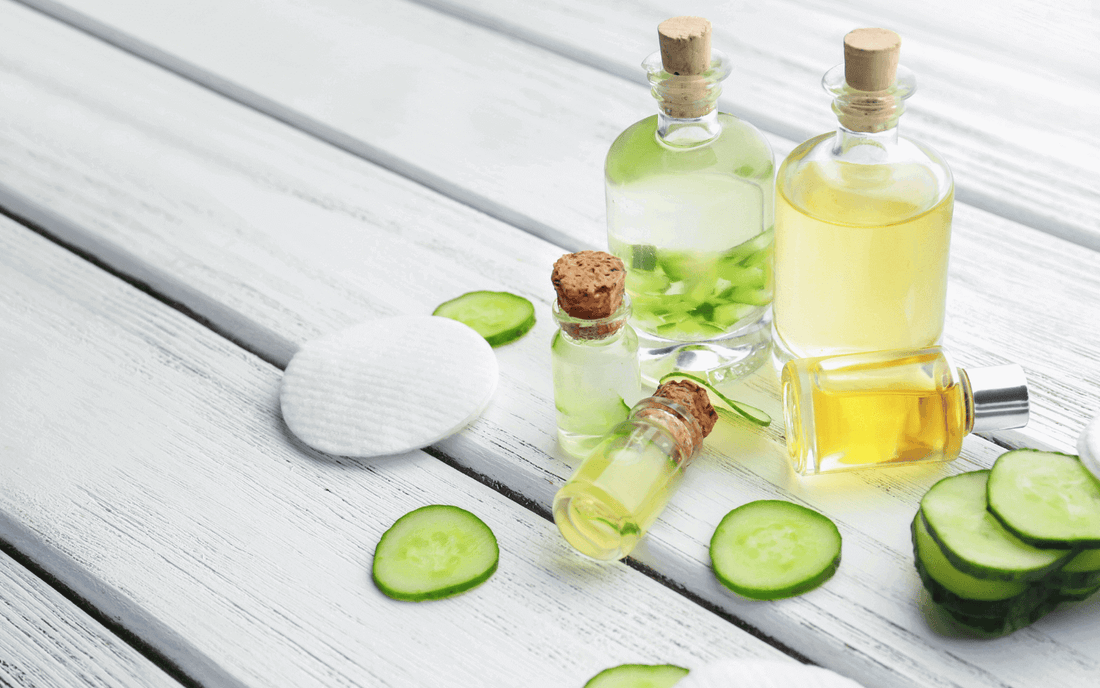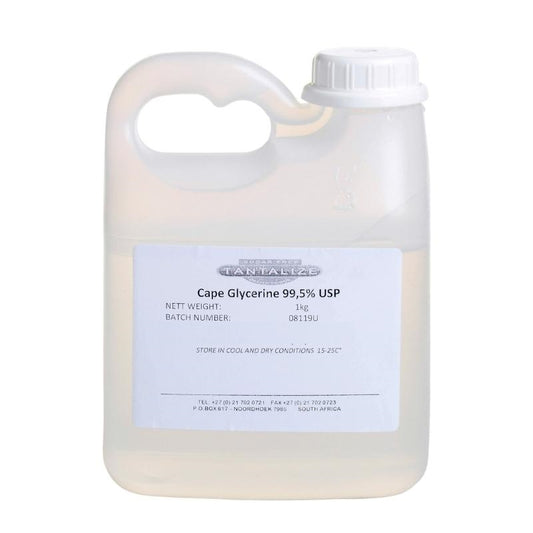
How To Make Glycerites
Juliette van der MeerWarning: addictive DIY ahead!
The fourth installment of the Botanical Extract Series is an exciting one. Glycerites, or glycerine based extracts, are fabulous ingredients with diverse uses. Let's find out more.
What Are Glycerites?
Glycerites are extracts made with glycerine as the solvent base. Glycerine is a humectant and is a wonderfully inexpensive ingredient, so an extract made using it is both cost effective and has a prime spot in the cosmetic ingredients industry.
What Is Glycerine?
Vegetable glycerine or glycerol, is a sugar alcohol derived from plant oils with a colourless, odourless syrup-like consistency. Although derived from plant oils, glycerine itself is not an oil and is water soluble. It has a sweet taste and is used in hundreds of products from skincare to foods.
Do Glycerites Need A Preservative?
Glycerites are very stable with a long shelf life and does not oxidise easily. It is a self preserving system but we always add a preservative when incorporating other substances containing water to prevent any chance of bacteria growing.
Why Make A Glycerite?
Unlike our previous extracts made with oil, vinegar and water, glycerine extracts can be made using fresh ingredients and this is what makes them so amazing! Because glycerine is a humectant it absorbs moisture, so using fresh ingredients containing moisture is actually the best way to prepare a glycerite. This opens up a whole new world of extracts:
- Fruit Extracts
- Vegetable Extracts
- Other Extracts Made With Fresh Products
Where Do I Use Glycerites?
Glycerites are a wonderful addition to your cosmetic ingredients because they are humectants with the added power of infused botanicals. High performance ingredients like botanical extracts add properties to your products that they wouldn't normally have if left out. Each type of extract will have its own unique properties, so research the ingredient first to see if it's what you want.
Can I Drink A Glycerite?
If made with food grade vegetable glycerine and ingredients, glycerites can be taken as supplements. They're a nice alternative to alcohol tinctures, and go well when blended in honey or smoothies. However glycerine is not as potent a solvent as alcohol or even water or vinegar, so your tincture will not be as strong.
Glycerite Extract Ideas:
- Cucumber
- Berries - I have used blueberries to great success but strawberries and other types should work well too.
- Papaya
- Kiwi fruit
- Lemon or other citrus fruit such as grapefruit.
- Or any other fresh fruit or vegetable.
- Vanilla pods also make a nice extract.
- Green tea works exceptionally well, and I imagine other teas such as rooibos would too.
- Rose petals (powdered)
- All kinds of dried botanicals
Some popular herbal extracts include
- White willow
- Lemon balm
- Horse chestnut
- Rosehip
- Olive leaf
- Ginkgo biloba
- Kelp
- and the list goes on!
If You Are Using Botanicals For Your Glycerite
If you are using dried botanicals I would recommend using the powdered version for maximum surface exposure to the glycerine. This will ensure that the glycerine extracts as much goodness as possible.
You may want to add in a small amount of distilled water to help moisten the dried botanicals. If you like you could replace the water with a different water-based substance that compliments your botanical such as aloe vera liquid gel or a hydrosol. This will of course yield a glycerite water 'blend' but it may be an interesting way to take your glycerine extract to the next level.
Here's an excerpt from a previous glycerite experiment I conducted so you can see how I went about it. Taking notes of your experiments is helpful if you want to go back and see what you did.
18 Oct - test
- In a 25ml beaker: 3 chopped up frozen blueberries covered with glycerine and 1% Geogard 221. (Glycerine in itself doesn't need preserving, but using fresh substances introduces the possibility of bacteria so I always play it safe and add a preservative).
- Mixed well.
-
- Following day: the glycerine has turned a brilliant purple colour from the blueberries and looks stunning. Will keep stirring and waiting.
-
- 8th Nov (3 weeks later): after stirring daily for 3 weeks, there is a deep purple hue and slight 'berry' scent. Strained and bottled up because it looks ready.
- Used to make a face cream (replaced normal glycerine content) which does give it a slight purple grey colour, but to be expected considering the colour of the glycerite. Fabulous results on skin!
Here are some of my glycerites in the light so you can see the gorgeous colours. From left to right: green tea, kiwi fruit, papaya, rose and blueberry extract. The green tea and rose glycerites were made using dried powdered botanicals, with no water added.

How Do I Use A Glycerite?
Since glycerites are extracts made with glycerine, you can substitute the plain glycerine content of any formula for your glycerite. Keep the amount the same as in the formula.
Glycerine is typically used at 1-10% of a formula, with around 5% being optimum otherwise it may get too sticky.
Glycerites may be heat sensitive so add to the cool down phase of a formula.
How Long Will A Glycerite Last?
About 1 year. Bottle in a glass jar and store it in a cool, dry cupboard.
Can I Use A Water/Glycerine Combination To Make My Glycerite?
Yes you actually can. You may want to try this blend when dealing with dried botanicals as the additional water may help to rehydrate the botanicals for better extraction. Go with a 3:1 ratio of glycerine to water.
If you are working with fresh ingredients, I would stick to using 100% glycerine as your solvent.
Can I Blend Glycerites In An Anhydrous Product Or In Oil?
Glycerine is water soluble so you will only be able to blend it with oil if you also have an emulsifier and a water phase.
Can Glycerites Be Diluted With Water Or Alcohol?
Yes they can be diluted.
If I Take Glycerite As A Supplement, How Much Glycerite Do I Take?
We do not give medical or nutritional advice; please consult a qualified professional for advice on supplements.

















